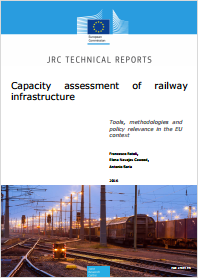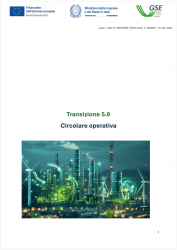Capacity assessment of railway infrastructure
| ID 2731 | | Visite: 5021 | News generali | Permalink: https://www.certifico.com/id/2731 |
Capacity assessment of railway infrastructure
Tools, methodologies and policy relevance in the EU context
The transport sector is increasingly faced with several issues related to the rising of traffic demand such as congestion, energy consumption, noise, pollution, safety, etc.. Due to its low external and environmental costs, railway can be considered (together with inland waterways and short-sea-shipping) as a key factor for the sustainable development of a more competitive and resource-efficient transport system (European Commission, White Paper 2011).
In order to reinforce the role of rail in European transport, there is a strong need of addressing the efficiency of the system and customers' satisfaction through targeted actions, i.e. rising reliability and quality of service. This becomes particularly pressing as many parts of the existing railway infrastructures are reaching their maximum capacity thus shrinking their capability to provide users and customers a higher or even adequate level of service.
Taking also into account that transport demand forecasts for 2030 clearly show a marked increase of rail activity across the whole Europe, we aim to address the issue of rail congestion in the context of relevant policy questions:
Is the actual rail Infrastructure really able to absorb forecasted traffic, without significant impacts on punctuality of the system?
Would the already planned interventions on the European railway infrastructure guarantee an adequate available capacity and consequently adequate reliability and level of service?
To which extent would the coveted competition in an open railway market be influenced by capacity scarcity, mainly during peak hours or along more profitable corridors?
An accurate estimation of capacity of the rail network can help answer these questions, leading policy makers to better decisions and helping to minimize costs for users.
In this context this report explores the issue of capacity scarcity and sets this issue in the context of other relevant policy issues (track access charges, cost/benefit and accessibility measures, maintenance programmes, freight services’ reliability, external, marginal congestion or scarcity cost for rail, impacts of climate changes, etc.), providing a methodological review of capacity and punctuality assessment procedures. To better explore the real applicability and the time and/or data constraints of each methodology, the study reports some practical applications to the European railway network. Finally in the last section the report discusses the topic from a modelling perspective, as the quantitative estimation of railway capacity constraints is a key issue in order to provide better support to transport policies at EU level.
European Commission 2016
Tags: News























